Chatbots have revolutionized various industries, and healthcare is no exception. In this comprehensive guide, we will explore the benefits, applications, and future potential of using a chatbot for medical diagnosis. By leveraging artificial intelligence and natural language processing, medical chatbots have the ability to assist patients, provide accurate diagnoses, and enhance the overall healthcare experience.
What are Medical Chatbots?
Medical chatbots are interactive software programs designed to simulate conversations with patients, providing healthcare-related information and assistance. These chatbots utilize artificial intelligence algorithms to understand user queries and provide relevant responses. By using advanced technologies, medical chatbots can handle a wide range of tasks, including symptom assessment, disease diagnosis, appointment scheduling, patient education and more.
Can a Chatbot Diagnose Disease?
While chatbots cannot replace human doctors, they can play a crucial role in assisting with disease diagnosis. Medical chatbots are equipped with vast databases of medical knowledge and utilize sophisticated algorithms to analyze symptoms and provide potential diagnoses. People sometimes even turn to ChatGPT for medical diagnosis.
However, it’s important to note that chatbot diagnoses should always be validated by medical professionals. Chatbots serve as valuable tools to support healthcare providers and help patients make informed decisions about seeking further medical attention.
Is there a Chatbot for Health Symptoms?
Absolutely! Many healthcare organizations have developed chatbots specifically designed to assist with health symptoms. These chatbots use intelligent algorithms to ask relevant questions about a user’s symptoms and provide initial assessments or recommendations.
Some popular healthcare chatbot examples, that specialize in symptom checking, include Babylon Health, Healthily, and Ada Health. These chatbots enable users to access immediate healthcare guidance, triage their symptoms, and decide on appropriate next steps.
How can a Chatbot for Medical Diagnosis and Symptom Checking Increase Patient Satisfaction?
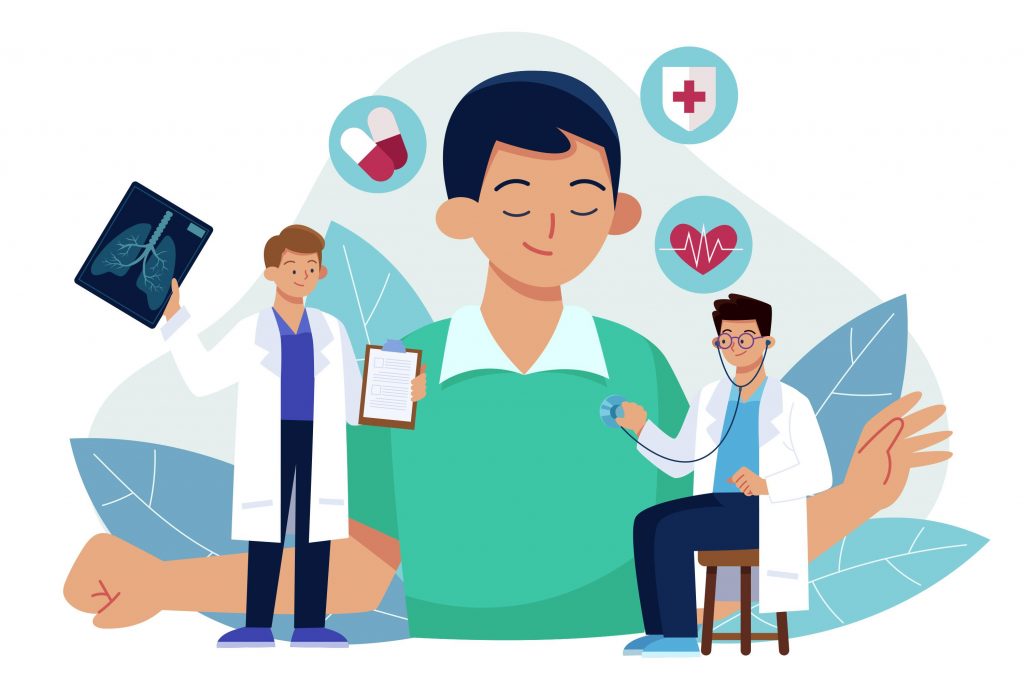
Improving patient satisfaction is a primary goal for healthcare organizations. Chatbots for medical diagnosis and other other forms of healthcare assistance contribute to enhanced patient satisfaction in several ways:
✅24/7 Availability: Medical chatbots are accessible anytime, allowing patients to seek assistance and answers to their health concerns without waiting.
✅Quick Responses: Chatbots provide instant responses, reducing patient anxiety and offering reassurance during times of uncertainty.
✅Personalized Care: By gathering patient information and medical history, chatbots can provide tailored recommendations, making patients feel heard and understood.
✅Efficient Triage: Chatbots help streamline the triage process, identifying urgent cases that require immediate attention and directing patients to appropriate healthcare services.
✅Reduced Wait Times: With chatbots, patients can receive immediate responses to their inquiries, eliminating the frustration and dissatisfaction associated with long waiting times for medical advice or appointments.
✅Convenience and Accessibility: Chatbots can be accessed from various devices, such as smartphones or computers, allowing patients to seek medical guidance from the comfort of their homes or while on the go. This convenience and accessibility contribute to increased patient satisfaction.
✅Reduced Communication Barriers: For patients who face language barriers, communication can be a challenge. Chatbots equipped with multilingual capabilities can overcome these barriers, ensuring effective communication and understanding, leading to improved patient satisfaction.
✅Patient Feedback and Improvement: Chatbots can collect feedback from patients, allowing healthcare organizations to continuously improve their services and address any gaps or concerns. This feedback loop demonstrates a commitment to patient satisfaction and enhances the overall patient experience.
Benefits of Using a Chatbot for Medical Diagnosis
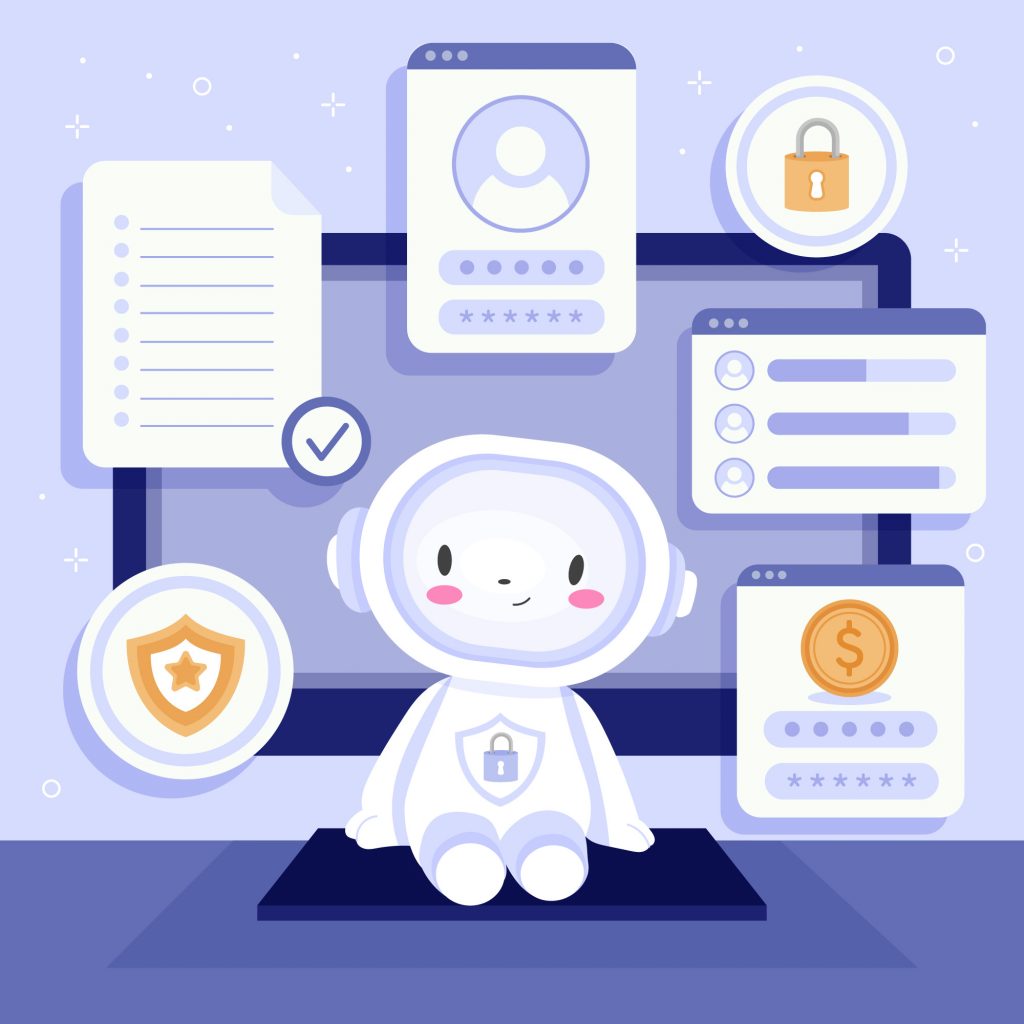
Implementing a chatbot for medical diagnosis brings numerous benefits to both patients and healthcare providers:
✅Improved Access: Chatbots enable patients to access healthcare guidance and support remotely, overcoming barriers such as geographical distance or limited mobility.
✅Enhanced Efficiency: Chatbots can handle a large volume of inquiries simultaneously, reducing waiting times and freeing up healthcare professionals’ time.
✅Triage Automation: By assessing symptoms and guiding patients, chatbots help prioritize cases based on severity, ensuring timely care for those in need.
✅Cost Savings: Chatbots reduce the need for unnecessary hospital visits or appointments, resulting in cost savings for both patients and healthcare systems.
✅Continuous Learning: With each interaction, chatbots gather valuable data that can be used to improve their performance, enhance accuracy, and provide more personalized recommendations.
✅Healthcare Resource Optimization: By handling routine inquiries and triaging cases, chatbots allow healthcare professionals to focus on complex cases, critical care, and specialized treatments. This optimizes the utilization of healthcare resources and ensures efficient delivery of care.
✅Remote Monitoring and Early Intervention: Chatbots can monitor patients’ health status remotely, identifying any warning signs or changes that require medical attention. This enables early intervention and timely medical support, potentially preventing complications and improving outcomes.
While a chatbot medical diagnosis will not be as accurate as a real doctor’s diagnosis, there have been way too many instances of chatbots providing trustworthy diagnoses and guiding patients to the right treatment. Having a medical chatbot online and available at all times also makes services more accessible for patients. You can learn more about this in the case studies section of our blog.
How to Build a Chatbot for Medical Diagnosis and Symptom Checking?
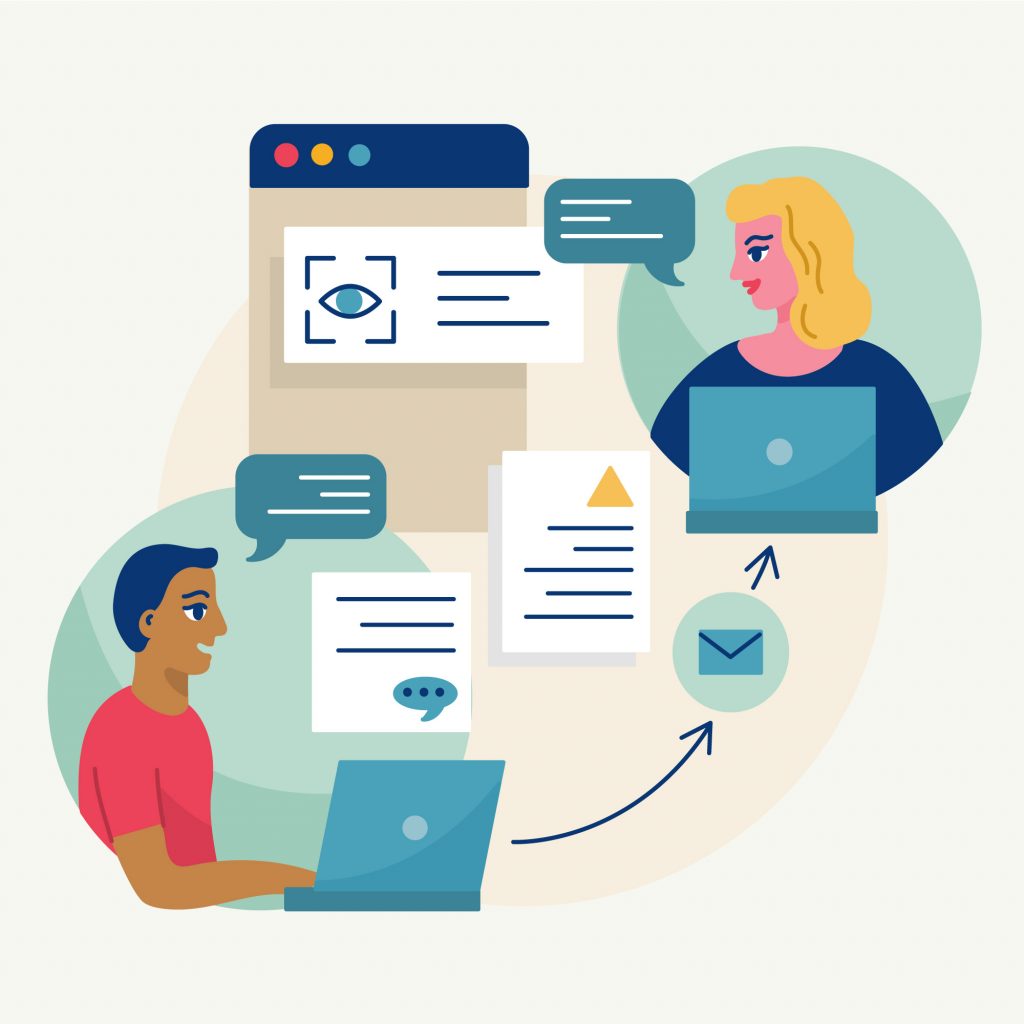
When choosing to build a chatbot for medical diagnosis and checking symptoms, you have two options:
a) Using a rule-based chatbot (i.e. a chatbot with a pre-designed conversation flow)
b) Using an AI-powered chatbot (i.e. a chatbot powered by AI that does not use natural language processing to understand queries and provide accurate replies)
c) Using a mix of both rule-based and AI-powered conversation flows
A chatbot for healthcare system using artificial intelligence is usually considered to be more advanced but that doesn’t necessarily make it the better option in all cases.
To choose the chatbot that will be the right pick for you you must first define your goals very clearly. If you believe that a pre-determined flow will be sufficient to provide your patients with all the help they need, then you can go ahead with it.
If you want to provide your patients with a more human-like, interactive interface then an AI-powered chatbot is the right pick for you.
A lot of companies use a mix of both rule-based and AI-powered flows for their medical diagnosis chatbot. For instance, say a patient comes onto your website and interacts with the chatbot for the first time; they can state their issues in their own words and the chatbot can use AI to interpret it and then guide them to a rule-based flow based on their symptoms. The Avec Group uses such a chatbot, learn more about it here.
Step-by-step Guide to Building Your Own Medical Chatbot
Step 1: Define your goals
Make a clear list of the goals you want to achieve from your chatbot.
Step 2: Choose a chatbot platform
Choose the right chatbot platform based on your goals. Popular healthcare chatbot platforms include – TARS, Dialogflow, Botsify, etc.
Step 3: Pick the right type of chatbot for your needs
Consult with experts to pick the right kind of chatbot for you i.e. rule-based, AI-powered or a mix of both.
Step 4: Designing the conversation flow
Design the conversation flow. This part is usually handled by the chatbot platform you choose. Using TARS’ no-code chatbot builder, you can design your own conversation flow as well.
You can check out how to build your own chatbot using the TARS builder:
✅To check out how to build a rule-based chatbot using the TARS builder Click here
✅To check out how to build an AI-powered chatbot using the TARS builder Click here
If you need any help, you can schedule a free demo with our experts and they will eagerly guide you.
Step 5: Test your chatbot thoroughly
Before you make your chatbot available to your patients, make sure to test it thoroughly yourself. Test it by providing random symptoms and see if it provides the right diagnosis and guides you through the desired steps.
Step 6: Observe data and optimize
Always choose a chatbot platform that provides detailed data analytics. This will include details of every patient conversation. Observe if patients are dropping off at a certain point in the conversation and optimize that part of the conversation flow to fix the issue. This should usually be taken care of by the chatbot platform you choose.
If you feel confused at any point, you can schedule a free demo with our team and receive a quick consultation and walk-through of the entire process. It will definitely help you make more informed decisions.
Case Studies – How Using a Medical Chatbot Benefits Real Healthcare Organizations
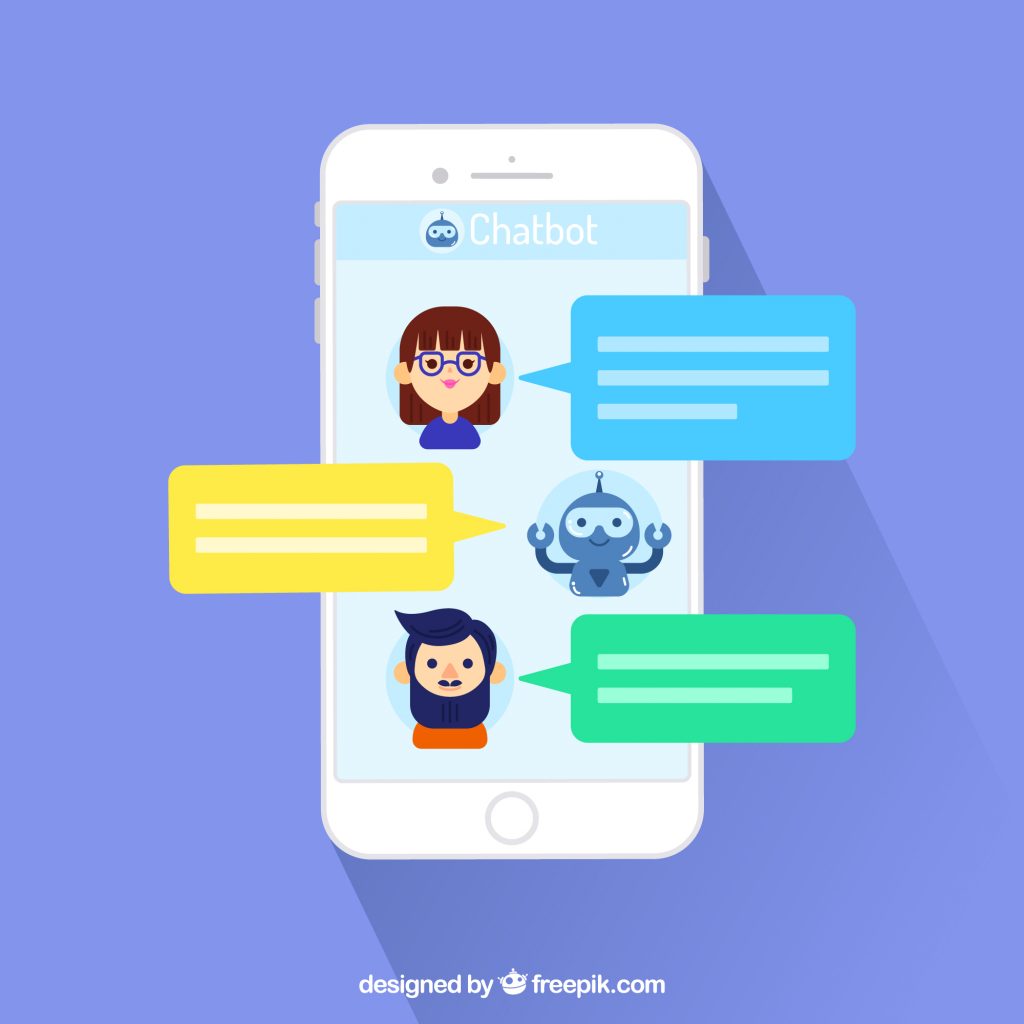
Case Study 1: How the Avec Group revolutionized their symptom-checking process with AI-powered medical chatbots.
The Avec Group is a prominent global healthcare operator committed to offering comprehensive support to patients throughout their treatment and care journey. In search of an interactive, scalable, and cost-effective solution, Avec sought a Symptom Checker that could replicate the personalized guidance of a human professional for an initial diagnosis, bypassing web forms and live chat. This is where Tars Chatbots and along with its Google Dialogflow integrations came in!
The symptom checker chatbot from Avec proved highly effective, assisting thousands of patients with a 90%+ interaction rate. It allowed for automated and conversational pre-diagnosis of their medical problems. Read the full case study here
Case Study 2: Vivant’s success in resolving women’s health queries with an impressive 82% accuracy using chatbots.
Vivant, a prominent health tech venture in Asia, leverages a cloud-based, data-driven healthcare platform. By implementing a TARS chatbot, they achieved faster and more efficient resolution of thousands of personal women’s health queries. With an impressive 82% accuracy rate, customer satisfaction soared to 75% thanks to our NLP chatbot technology. Read the full case study here
Case Study 3: How International Medical Center automated 1 million customer service conversations using Tars Website and WhatsApp Chatbots.
The International Medical Center, located in Jeddah, Saudi Arabia, has partnered with Tars to develop an extensive chatbot accessible via WhatsApp and the web. This chatbot assists patients with basic tasks such as accessing their patient files (prescriptions, reports) and managing appointments.
By resolving repetitive queries that would typically be handled by human agents, the chatbot has greatly improved the patient experience while reducing the workload for IMC’s customer service and administrative staff. Its remarkable adoption is evident in automating over 1 million customer service conversations for IMC to date. Read the full case study here.
Want to experience the benefits of TARS chatbots for yourself? Schedule a free demo today.
How Can Chatbots be Used in Healthcare?
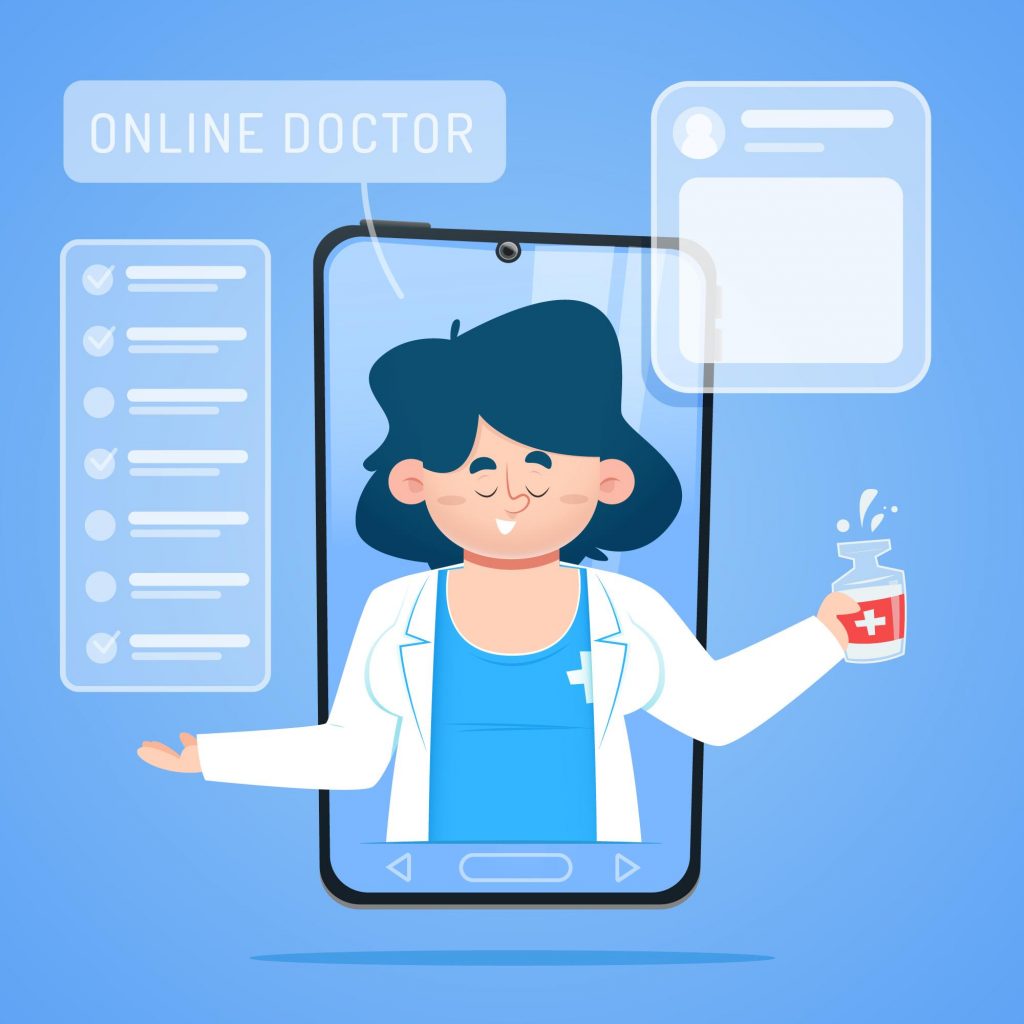
The use of chatbots in healthcare is becoming highly popular because of the wide range of applications they offer.
Chatbots can be utilized for:
✅Patient Education: Chatbots can provide reliable healthcare information, answer frequently asked questions, and offer guidance on preventive care and lifestyle modifications.
✅Appointment Scheduling: Chatbots streamline the process of scheduling appointments, rescheduling, or canceling them, reducing administrative burden and improving patient access.
✅Medication Management: Chatbots can send medication reminders, provide dosage instructions, and answer queries about potential drug interactions.
✅Follow-up Care: Chatbots can support follow-up care by reminding patients about upcoming appointments, conducting post-visit assessments, and addressing any concerns or questions that may arise after a consultation.
✅Patient Triage: Chatbots can assist in patient triage by assessing the severity of symptoms and providing appropriate recommendations. They can help identify urgent cases that require immediate medical attention, guide patients to the nearest emergency services, or suggest non-emergency care options based on the presented symptoms.
✅Remote Symptom Monitoring: Chatbots can gather information about a patient’s symptoms and track their progression over time. By regularly collecting data, chatbots can alert healthcare providers to any worsening symptoms or changes that may require medical attention.
✅Mental Health Support: Chatbots can provide mental health resources, offer coping strategies, and engage in supportive conversations for individuals dealing with stress, anxiety, or depression. They can also assist in identifying potential mental health emergencies and connecting users to appropriate helplines or professionals.
✅Medication Reminders and Refills: Chatbots can send medication reminders to patients and facilitate prescription refills. They can notify individuals when it’s time to take their medications, provide dosage instructions, and even connect with pharmacies to streamline the refill process.
✅Health Promotion Campaigns: Chatbots can engage in health promotion initiatives by delivering targeted messages about vaccinations, disease prevention, or healthy lifestyle habits. They can also conduct surveys or assessments to gather information on public health trends.
✅Language Assistance: Chatbots can offer language support to patients who have limited proficiency in the local language. They can provide translation services during medical consultations or help patients navigate healthcare systems by providing information in their preferred language.
✅Patient Feedback and Satisfaction Surveys: Chatbots can gather patient feedback and satisfaction surveys, enabling healthcare organizations to collect valuable insights and identify areas for improvement in their services.
✅Research and Clinical Trials: Chatbots can aid in recruiting participants for clinical trials, answering questions about eligibility criteria, and providing information about the trial process.
✅Telemedicine Support: Chatbots can integrate with telemedicine platforms to facilitate remote consultations. They can gather patient information prior to the virtual visit, assist in scheduling appointments, and provide instructions on how to connect with healthcare providers using video conferencing tools.
✅Healthcare Navigation: Chatbots can help patients navigate the healthcare system by providing information about nearby healthcare facilities, available services, and insurance coverage. They can assist in finding specialists, booking diagnostic tests, or locating pharmacies.
✅Emergency Response: In emergency situations, chatbots can assist in providing immediate first aid instructions, guiding individuals on how to perform CPR or manage injuries until medical professionals arrive.
What Can We Expect in the Future?
The future of chatbots in healthcare looks promising. Advancements in AI, machine learning, and natural language processing will enhance their diagnostic capabilities, making them even more accurate and reliable.
We can expect chatbots to become integral parts of healthcare systems, supporting healthcare providers in delivering efficient and personalized care. Additionally, chatbots may integrate with telemedicine platforms, enabling remote consultations and expanding access to healthcare services.
How to Start Using a Chatbot for Medical Diagnosis, Symptom-Checking, and Other Healthcare Tasks
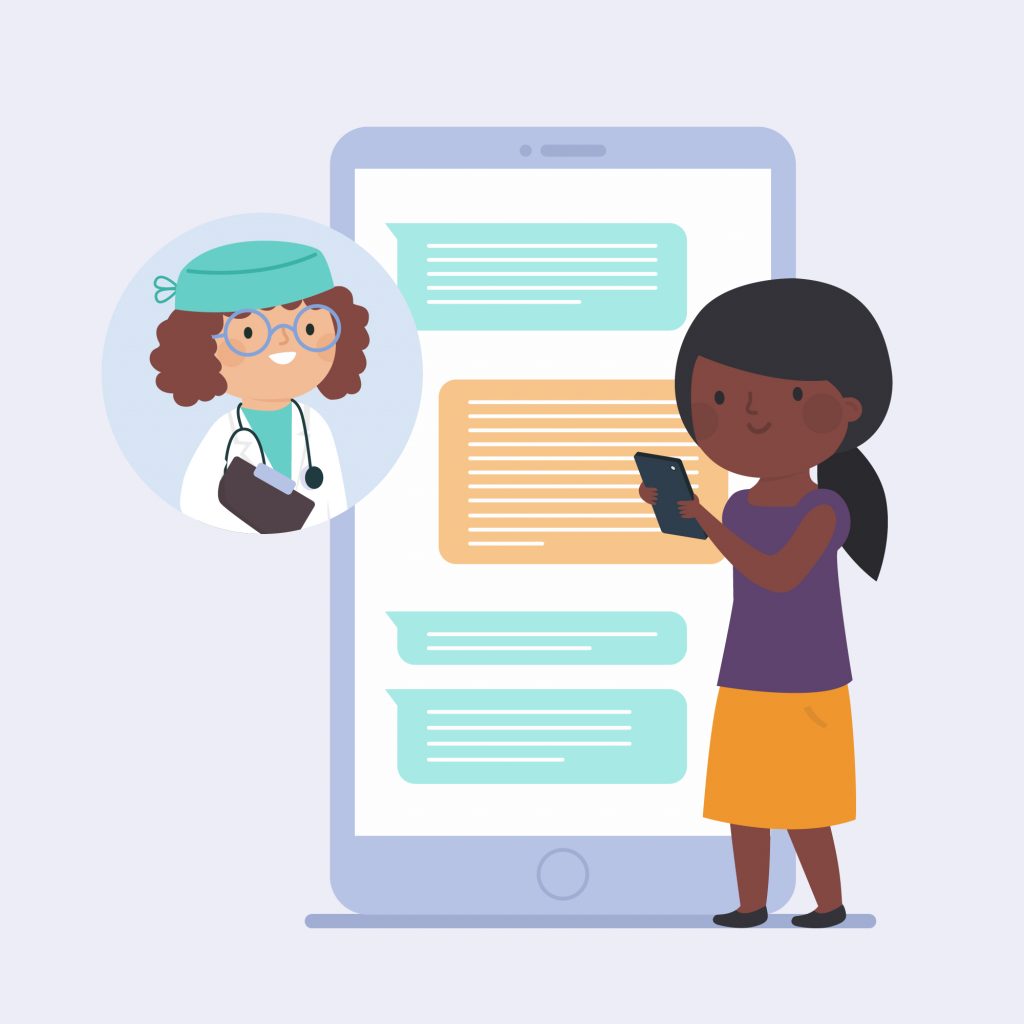
Need a medical chatbot for your healthcare organization? You are in the right place. TARS has provided chatbot and AI solutions to multiple medical and healthcare organizations around the world, including the International Medical Center, Avec Group, Vivant, Bloom IVF, and many more.
How to get started? Simply schedule a free demo and our team will give you a free consultation, walk you through the entire process, and get you started on your chatbot journey.

I am a creative thinker and content creator who is passionate about the art of expression. I have dabbled in multiple types of content creation which has helped me explore my skills and interests. In my free time, I indulge in watching animal documentaries, trying out various cuisines, and scribbling my own thoughts. I have always had a keen interest in blogging and have two published blog accounts spanning a variety of articles.
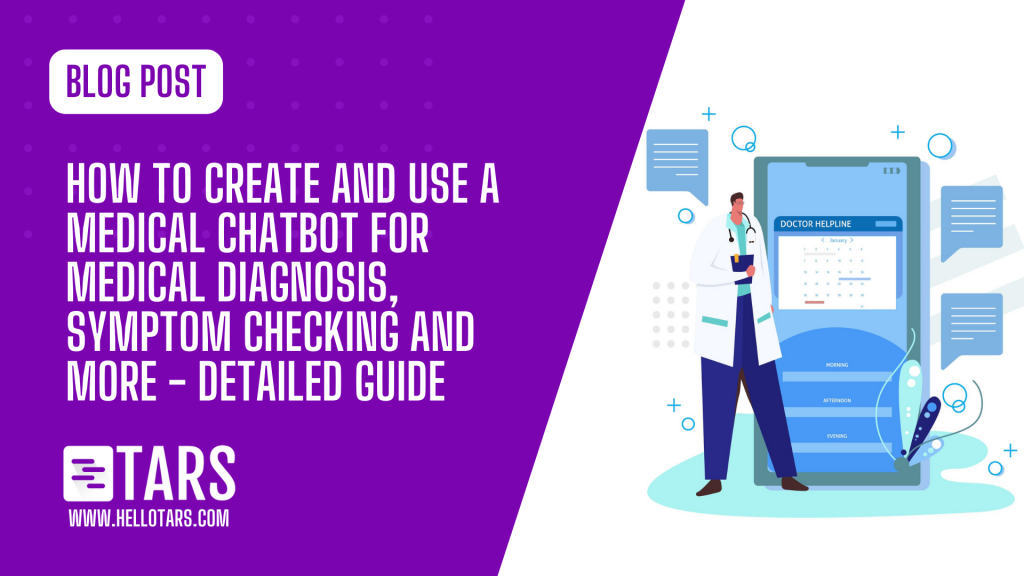
0 Comments on "How to Create and Use a Medical Chatbot for Medical Diagnosis, Symptom Checking and More – Detailed Guide"